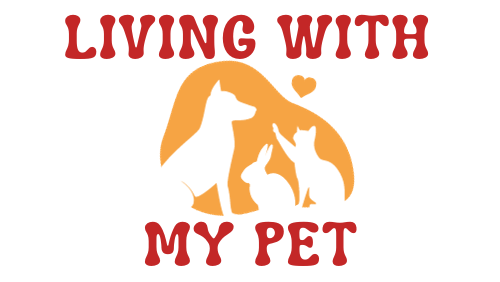Have you ever wondered how you can make cost-effective yet safe toys at home? With a touch of creativity and a few common household items, you can create a world of fun for your little ones without breaking the bank. From arts and crafts projects to simple DIY creations, this article will provide you with some incredible ideas on how to make toys that are not only budget-friendly but also safe for your children to play with. So, roll up your sleeves, gather your materials, and let the toy-making adventures begin!
Choosing Safe Materials
When making toys at home, it is crucial to choose materials that are safe for children to play with. Understanding safety standards is important in ensuring the materials you use meet the necessary criteria. Look for materials that are labeled as safe for children, such as those that adhere to international safety standards like ASTM or EN71.
One key aspect of choosing safe materials is to avoid toxic substances. Some materials, like certain plastics or paints, can contain harmful chemicals that can be harmful if ingested or come in contact with the skin. Opt for non-toxic, water-based paints and natural materials whenever possible.
Additionally, using non-allergenic materials is important to ensure that children with allergies or sensitivities can still enjoy the toys you create. Avoid using materials such as latex or certain types of dyes that may trigger allergic reactions. Opt for hypoallergenic fabrics, like organic cotton or bamboo, and be mindful of any potential allergens in the materials you select.
Simple DIY Toy Ideas
Making toys at home can be a fun and cost-effective way to entertain children. There are many simple DIY toy ideas that require minimal materials and can be made using basic household items. Fabric and felt toys are a great option, as they are soft, safe, and can be easily sewn or glued. Cardboard creations, such as DIY puzzles or playhouses, are another great idea as they are versatile and can be easily customized. Transforming recycled objects, such as plastic bottles or cardboard tubes, into toys can also be a creative and eco-friendly option.
Age-Appropriate Design
Designing toys that are age-appropriate is essential for the safety and enjoyment of children. Consider developmental milestones when creating toys for different age groups. For infants, choose toys that stimulate their senses and are designed for grasping and exploring. Toddlers benefit from toys that encourage fine motor skills and imaginative play. Older children may enjoy toys that promote problem-solving and creativity.
Size and choking hazards are important factors to consider when designing toys. Make sure that the size of the toy parts is appropriate for the age of the child and avoid using small components that can easily be swallowed. Additionally, be mindful of any sharp edges or protrusions that could potentially cause injuries.
Securing Toy Parts
To ensure the safety of the toys you create, it is important to securely attach all toy parts. Avoid using loose or detachable parts that may pose a choking hazard or be easily swallowed. If using adhesives, choose non-toxic options that are safe for children. It is also essential to ensure sturdy construction to prevent any accidental breakage or detachment of parts during play.
Avoiding Small Parts
Small parts can present a choking hazard to young children, so it is important to take precautionary measures to eliminate this risk. One way to do this is by creating a size test to ensure that all toy parts are larger than the child’s throat to prevent choking. When choosing components for your toys, opt for larger sizes to ensure they can’t be easily swallowed. Additionally, use appropriate methods to securely fasten small parts to the toy to avoid any accidental detachment.
Non-Chokable Toy Materials
Certain materials are safer than others when it comes to the risk of choking. Silicone and rubber are excellent choices as they are soft and pliable, making them less likely to cause choking if accidentally swallowed. Using large beads or balls can also be a safer alternative to tiny components. When creating stuffed toys or plushies, choose fillings that are soft and safe, such as polyester fiberfill or organic cotton.
Testing for Safety
Before giving homemade toys to children, it is important to conduct safety tests to ensure they are durable and safe. Check for any sharp edges or points that could potentially cause injuries. Ensure that all toy parts are securely attached and cannot be easily detached during play. Perform age-appropriate testing to make sure the toys are suitable for the intended age group and withstand the rigors of playtime.
Supervision and Maintenance
While homemade toys can be safe, proper supervision and maintenance are still necessary. Educate children on safe play practices and explain any potential hazards associated with the toys. Regularly inspect the toys for any signs of wear or damage, such as loose parts or frayed edges. If any repairs are needed, ensure that they are promptly taken care of. If a toy is beyond repair, it is important to dispose of it properly to prevent any potential accidents.
Including Educational Elements
In addition to being safe, homemade toys can also be educational. Incorporate learning concepts into the design of the toys to enhance children’s cognitive development. For example, you can create puzzles that encourage problem-solving skills or toys that promote counting and letter recognition. Toys that encourage creativity, such as art supplies or building blocks, can also help develop a child’s imagination and problem-solving abilities.
Customizing Based on Interests
One of the great advantages of making toys at home is the ability to customize them based on the interests and preferences of the children. Consider the specific interests of the child you are creating the toy for and incorporate elements that will engage and excite them. Personalized touches, such as their favorite colors or characters, can make the toys even more special. Tailor the complexity and design of the toys to different ages to ensure maximum enjoyment and engagement.
